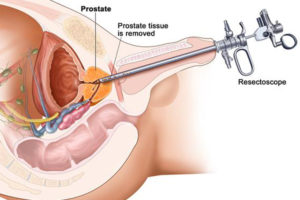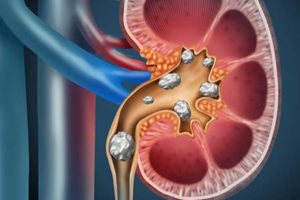Overview
Abdominal pain is pain that occurs between the chest and pelvic regions. Abdominal pain can be crampy, achy, dull, intermittent or sharp. It’s also called a stomachache.
Inflammation or diseases that affect the organs in the abdomen can cause abdominal pain. Major organs located in the abdomen include:
- intestines (small and large)
- kidneys
- appendix (a part of the large intestine)
- spleen
- stomach
- gallbladder
- liver
- pancreas
Viral, bacterial, or parasitic infections that affect the stomach and intestines may also cause significant abdominal pain.
What causes abdominal pain?
Abdominal pain can be caused by many conditions. However, the main causes are infection, abnormal growths, inflammation, obstruction (blockage), and intestinal disorders.
Infections in the throat, intestines, and blood can cause bacteria to enter your digestive tract, resulting in abdominal pain. These infections may also cause changes in digestion, such as diarrhea or constipation.
Cramps associated with menstruation are also a potential source of lower abdominal pain, but more commonly these are known to cause pelvic pain.
Other common causes of abdominal pain include:
- constipation
- diarrhea
- gastroenteritis (stomach flu)
- acid reflux (when stomach contents leak backward into the esophagus, causing heartburn and other symptoms)
- vomiting
- stress
Diseases that affect the digestive system can also cause chronic abdominal pain. The most common are:
- gastroesophageal reflux disease (GERD)
- irritable bowel syndrome or spastic colon (a disorder that causes abdominal pain, cramping, and changes in bowel movements)
- Crohn’s disease (an inflammatory bowel disease)
- lactose intolerance (the inability to digest lactose, the sugar found in milk and milk products)
Causes of severe abdominal pain include:
- organ rupture or near-rupture (such as a burst appendix, or appendicitis)
- gallbladder stones (known as gallstones)
- kidney stones
- kidney infection
Types of abdominal pain
Abdominal pain can be described as localized, cramp-like, or colicky.
Localized pain is limited to one area of the abdomen. This type of pain is often caused by problems in a particular organ. The most common cause of localized pain is stomach ulcers (open sores on the inner lining of the stomach).
Cramp-like pain may be associated with diarrhea, constipation, bloating, or flatulence. In women, it can be associated with menstruation, miscarriage, or complications in the female reproductive organs. This pain comes and goes, and may completely subside on its own without treatment.
Colicky pain is a symptom of more severe conditions, such as gallstones or kidney stones. This pain occurs suddenly and may feel like a severe muscle spasm.
Location of pain within the abdomen
The location of the pain within the abdomen may be a clue as to its cause.
Pain that is generalized throughout the abdomen (not in one specific area) may indicate:
- appendicitis (inflammation of the appendix)
- Crohn’s disease
- traumatic injury
- irritable bowel syndrome
- urinary tract infection
- the flu
Pain that is focused in the lower abdomen may indicate:
- appendicitis
- intestinal obstruction
- ectopic pregnancy (a pregnancy that occurs outside the womb)
In women, pain in the reproductive organs of the lower abdomen can be caused by:
- severe menstrual pain (called dysmenorrhea)
- ovarian cysts
- miscarriage
- fibroids
- endometriosis
- pelvic inflammatory disease
- ectopic pregnancy
Upper abdominal painmay be caused by:
- gallstones
- heart attack
- hepatitis (liver inflammation)
- pneumonia
Pain in the center of the abdomen might be from:
- appendicitis
- gastroenteritis
- injury
- uremia (buildup of waste products in your blood)
Lower left abdominal pain may be caused by:
- Crohn’s disease
- cancer
- kidney infection
- ovarian cysts
- appendicitis
Upper left abdominal pain is sometimes caused by:
- enlarged spleen
- fecal impaction (hardened stool that can’t be eliminated)
- injury
- kidney infection
- heart attack
- cancer
Causes of lower right abdominal pain include:
- appendicitis
- hernia (when an organ protrudes through a weak spot in the abdominal muscles)
- kidney infection
- cancer
- flu
Upper right abdominal painmay be from:
- hepatitis
- injury
- pneumonia
- appendicitis
When to see the doctor
Mild abdominal pain may go away without treatment. However, in some cases, abdominal pain may warrant a trip to the doctor.
Call 911 if your abdominal pain is severe and associated with trauma (from an accident or injury) or pressure or pain in your chest.
You should seek immediate medical care if the pain is so severe that you can’t sit still or need to curl into a ball to get comfortable, or if you have any of the following:
- bloody stools
- high fever (greater than 101°F)
- vomiting up blood (called hematemesis)
- persistent nausea or vomiting
- yellowing of the skin or eyes
- swelling or severe tenderness of the abdomen
- difficulty breathing
Make an appointment with your doctor if you experience any of the following symptoms:
- abdominal pain that lasts longer than 24 hours
- prolonged constipation
- vomiting
- a burning sensation when you urinate
- fever
- loss of appetite
- unexplained weight loss
Call your doctor if you’re pregnant or breastfeeding and you experience abdominal pain.
How is the cause of abdominal pain diagnosed?
The cause of abdominal pain can be diagnosed through a series of tests. Before ordering tests, your doctor will do a physical examination. This includes gently pressing down on various areas of your abdomen to check for tenderness and swelling.
This information, combined with the severity of the pain and its location within the abdomen, will help your doctor determine which tests to order.
Imaging tests, such as MRI scans, ultrasounds, and X-rays, are used to view organs, tissues, and other structures in the abdomen in detail. These tests can help diagnose tumors, fractures, ruptures, and inflammation.
Other tests include:
- colonoscopy (to look inside the colon and intestines)
- endoscopy (to detect inflammation and abnormalities in the esophagus and stomach)
- upper GI (a special X-ray test that uses contrast dye to check for the presence of growths, ulcers, inflammation, blockages, and other abnormalities in the stomach)
Blood, urine, and stool samples may also be collected to look for evidence of bacterial, viral, and parasitic infections.
How can I prevent abdominal pain?
Not all forms of abdominal pain are preventable. However, you can minimize the risk of developing abdominal pain by doing the following:
- Eat a healthy diet.
- Drink water frequently.
- Exercise regularly.
- Eat smaller meals.
If you have an intestinal disorder, such as Crohn’s disease, follow the diet your doctor has given you to minimize discomfort. If you have GERD, don’t eat within two hours of bedtime.
Lying down too soon after eating may cause heartburn and abdominal pain. Try waiting at least two hours after eating before lying down.




Gallstones are the result of bile that crystallizes in the gallbladder. They tend to occur more often in women, often worsening during pregnancy, and those older than 40. While some gallstones are very small and carry no symptoms, others can cause a gallbladder attack that brings nausea and intense pain in the upper-right abdomen, where the gallbladder is, or in the right shoulder or between the shoulder blades. These attacks often happen after eating a fatty meal and frequently occur at night, making it difficult to decipher between a big meal gone bad and something more serious.